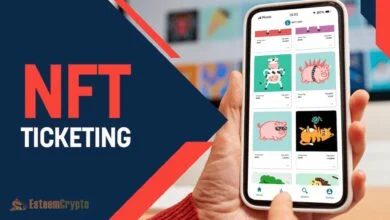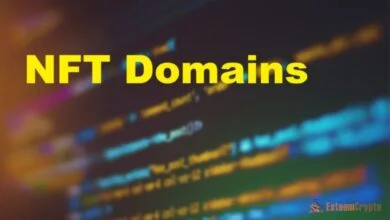Types of NFTs: An In-depth Explanation

Types of NFTs. Nonfungible tokens (NFTs) have grown phenomenally since their 2014 debut, with a value of $16 billion in 2021 and an expected value of over $210 billion by 2030. They are distinct assets from fungible, divisible, and non-unique cryptocurrencies like Bitcoin (BTC) ($61,390) or Ether (ETH) ($3,388). On the other hand, nonfungible tokens are unique in value and cannot be swapped for one another.
Take profile picture NFTs (PFP), which drew inspiration from Larva Labs’ successful NFT project CryptoPunks, as an example of how NFTs are becoming valuable tools across various industries, from fashion to play-to-earn (P2E) gaming. This also proves ownership of physical or digital assets like art, music, games, and collectibles.
What are NFTs?
NFTs are a relatively new digital asset; they stand for a distinct and non-transferable data unit kept on the blockchain, from which the owner can get an unchangeable certificate of ownership and validity evidence. Various industries that require proof of ownership of assets, such as the arts, music, gaming, NFT event tickets, and collectibles of any type, have taken an interest in nonfungible tokens due to the ease of purchasing and owning them without a third-party intermediary.
They let artists tokenize their digital works, which helps with ownership verification and provenance tracking. You can buy or sell these one-of-a-kind products on several NFT marketplaces. Each NFT’s unique identification code makes it possible to verify ownership and transfer tokens between owners easily.
Because certain blockchains use significant energy, NFTs have come under scrutiny from environmental groups. In September 2022, Ethereum, a popular platform, shifted to a proof-of-stake mechanism to address the energy consumption issue. It has created more NFTs than any other blockchain currently in existence.
How do NFTs Work?
NFTs are decentralized and recorded on the blockchain, a public ledger accessible to all users. They get by on smart contracts, agreements whose terms are encoded in code and which execute themselves. Smart contracts allow for the programming of NFTs and the automation of numerous tasks, including paying royalty commissions to creators upon resale of the NFT.
Realistically, digital assets like artworks, GIFs, films, sports highlights, collectibles, or virtual avatars can be “minted” to produce an NFT. Imagine a tangible object in digital form, so the buyer acquires a computer file rather than a real artwork. As a collectible, even tweets can be transformed into NFTs. For example, in 2021, former Twitter CEO Jack Dorsey made approximately $3 million by selling his first tweet as an NFT.
What are NFTs Used for?
Due to their increased independence from art galleries, third-party agents, and intermediaries and the potential to commercialize their works, NFTs have become ideal tools for content creators and artists. By bypassing intermediaries and selling directly to fans, artists can retain a larger portion of their earnings.
So far, NFTs have mostly been employed in the arts, but companies like Taco Bell and Charmin, which make toilet paper, have used them to collect money for charity. They could also create securitized NFTs of priceless heirlooms like photos, films, and event tickets.
Types of NFTs
Theoretically, due to their unique qualities, scarcity, or specialization, everything can be transformed into an NFT and gain more value. One possibility is to take a picture of a real painting and turn it into an NFT digital item; another is to scan and preserve event tickets as PDFs. Listed below are Types of NFTs that may serve practical purposes or serve as valuable collectors.
Art and collectible NFTs
These NFTs are the most common. They are in for various digital artwork and collectibles, including animations and illustrations, and function similarly to real treasures in a digital form. Famous digital treasures like Bored Ape Yacht Club and CryptoPunks have made a killing and are rightfully ranked among the most valuable digital collectibles ever. No. 8817, the most expensive Bored Ape, fetched $3.4 million at auction.
Generative art NFTs
Generative art frequently uses autonomous systems, which may be wholly or partially comprised of artificial intelligence (AI) or algorithms, to randomly generate music, literature, and any other form of visual content. Typically, collections like CryptoPunks and BAYC are represented by generative non-fungible tokens (NFTs).
Gaming NFTs
These assets, which are also called gamified NFTs, offer a novel way to make money through gaming and trading.One innovative way to monetize your point-to-exchange (P2X) experience is with game finance, or GameFi. It integrates blockchain technology, NFTs, and gaming resources.
These Types of NFTs represent characters and in-game elements like skin type and accessories. While features have been around for a while and weren’t invented by NFTs, they can be made even better by buying an NFT and using it to trade and earn cryptocurrencies in the game.
Profile picture NFTs
The real-world picture of millions of users has been replaced with a digital avatar that frequently is or resembles one of the CryptoPunks or a Bored Ape. This transformation of social media PFPs into NFTs has occurred at the same time.
Fashion NFTs
In spite of the established crypto bear market, branded NFTs had a breakout year in 2022. More businesses and fashion Web3 startups have formed since then, ignoring the crypto crisis in favour of focusing on long-term value rather than short-term earnings.
Types of NFTs: A personal avatar in a metaverse platform might use and wear digital clothing collections created by prominent labels like Dolce & Gabbana. Consumers can interact with fashion NFTs innovatively by being named by the brand community’s activities and receiving rewards during events, providing a unique experience.
Event tickets NFTs
Individuals passionate about collecting event tickets could have their pass coined on blockchain platforms as a non-fungible token (NFT), which would then be put up for auction by the event organisers. As a result of the fact that these tickets can be kept and resold as collectibles, they are automatically considered memorabilia. It is also possible to sell the NFT tickets at a predetermined price in order to reduce the likelihood of counterfeiting.
Domain NFTs
Obtaining a digital identity is made simple by using non-fungible tokens (NFTs), which also make it possible for users to possess a registered digital name in games, social media, or as addresses for websites housed on a blockchain. In order to accomplish this, blockchain addresses consisting of lengthy sequences of letters and numbers are transformed into shorter, more easily recognisable, and more easily recalled addresses and means of identification.
Virtual real estate NFTs
Decentralised digital communities, aided by platforms like Decentraland, have seen virtual real estate NFTs grow wild since the metaverse explosion in 2021. They stand for real estate in the metaverse or virtual land in video games.
Types of NFTs: Businesses in various sectors will be able to use the many possibilities presented by these plans to build an ideal virtual metropolis for gaming and development, complete with retail outlets, educational institutions, and places to live and work.
Music NFTs
Tokenizing their labour on music and event tickets has offered new prospects for musicians and artists thanks to NFTs. Buying an NFT means the user’s actual piece of music, as opposed to listening to it, like when they buy a Spotify download or stream. Everyone wins when fans and musicians alike own music NFTs. With the artist’s success comes a new source of revenue, and as the consumer’s NFT investment goes up, so does theirs.
Content and Publishing NFTs
It is possible to tokenize written content, allowing authors, journalists, and other content creators to monetize their articles, books, and blogs through usable tokens (NFTs). This would open up new approaches to distribution and rewards.
Tokenized World of NFTs
Financial institutions stand to gain from novel asset issuance, administration, and trading solutions, while the general public stands to gain from a paradigm shift in our relationship with monetary value if asset tokenization goes through. By creating a decentralised ledger that can be securely linked to actual assets, tokenizing them using NFTs should streamline transactions involving these assets and make them more resistant to fraud.
Due to their unique and indivisible nature, tokenized intellectual property, real-world assets, deeds, certificates, internet content, virtual fashion, and sports highlights are just a few examples of the many potential use cases for NFTs.
Although there are still some obstacles to overcome, such as unclear regulations and the inability of networks and other systems to operate together, NFTs have the potential to revolutionise the financial sector in the future. The innovative solutions they provide have the ability to change sectors, opening up new ecosystems and financial opportunities.








